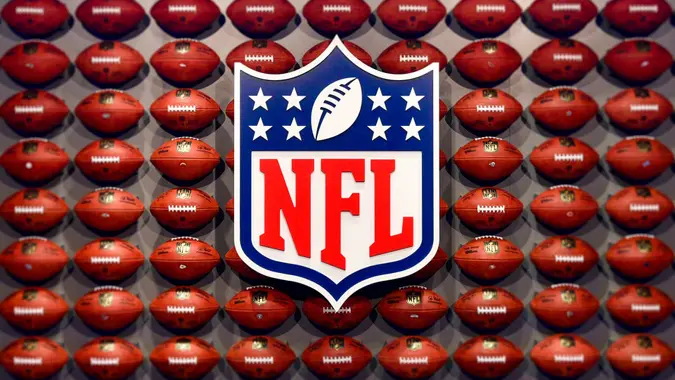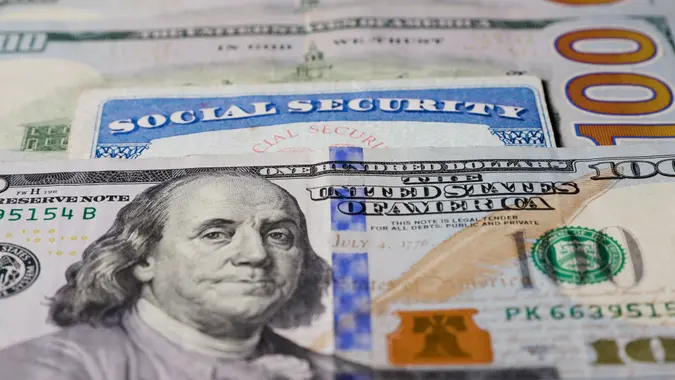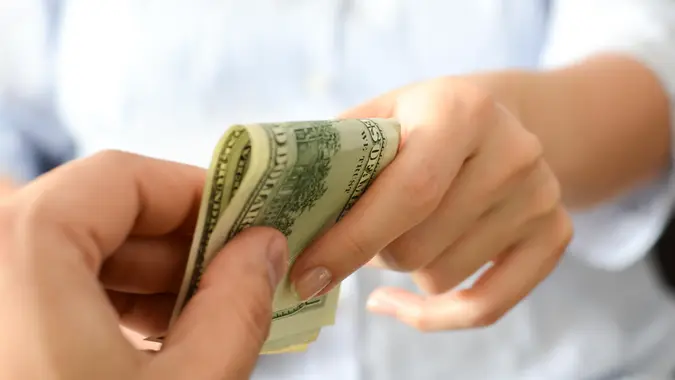How to Get a Loan After You’ve Filed for Bankruptcy

Commitment to Our Readers
GOBankingRates' editorial team is committed to bringing you unbiased reviews and information. We use data-driven methodologies to evaluate financial products and services - our reviews and ratings are not influenced by advertisers. You can read more about our editorial guidelines and our products and services review methodology.

20 Years
Helping You Live Richer

Reviewed
by Experts

Trusted by
Millions of Readers
People who file for bankruptcy are not alone: Consumers and businesses combined filed 794,960 bankruptcies in 2016, according to U.S. Courts Statistics and Reports. One of the major downsides of declaring bankruptcy is that it will stay on your credit report for either seven years, in the case of a Chapter 13 bankruptcy, or 10 years, in the case of a Chapter 7 bankruptcy or a Chapter 11 bankruptcy, which is typically used by businesses.
Bankruptcy is usually considered a last resort when it comes to handling debt problems; however, in some cases, bankruptcy could be the right move for a new financial start. Here’s how you can move on from your bankruptcy and how to get a loan if you have bad credit.
Raise Your Credit Score
As long as a bankruptcy filing appears on your credit report, it will be difficult to get a reasonable interest rate on an unsecured credit card, a home mortgage or a car loan.
Filing for bankruptcy is a double-edged sword: It’s hard to get loans with bad credit, but you can’t demonstrate positive credit behavior until you get a loan. The key to getting loans is to raise your credit score after bankruptcy.
If you have a decent credit score, you can expect to see it fall by upwards of 100 points if you file bankruptcy. If you already have multiple delinquencies, charge-offs or collection accounts on your record, most of the damage to your credit score is likely already done. But your credit score typically suffers more when you file for bankruptcy.
If you intend to get loans at reasonable interest rates in the future, you’ll need to find a creditor that offers loans for people with bad credit. Make sure you understand the terms of post-bankruptcy loan applications before making financial commitments to any loan providers.
Get a Secured Credit Card
Immediately after a bankruptcy discharge, it can be hard to get a low-cost credit card. A good first step after filing for bankruptcy is applying for a secured credit card, sometimes referred to as a “bad-credit credit card.” With this type of card, you deposit a specified amount of cash, which serves as your credit line.
The process for applying for a secured credit card is the same as it is with a regular credit card. After you fill out an application with personal and financial details, the credit card issuer will run a credit check and determine your credit worthiness. A secured credit card might be easier to get than other types of loans or credit, and you can use it to rebuild your credit.
Related: 10 Best Credit Cards for Bad Credit
How Lenders Decide When to Give You Unsecured Credit
Secured credit cards are easier to obtain because the card issuer takes on less risk by requiring a deposit. In other words, if you fail to pay off your debt, your deposit will serve as a payment.
The most responsible path to obtaining good credit begins when you demonstrate you can handle your secured card responsibly. If you pay your bills on time, you should begin to see your credit score increase after deciding to file for bankruptcy.
After 12 months of consistent payments, you’ll begin to establish a good payment history. At that point, an unsecured lender might offer to refund your deposit, effectively transitioning your credit status from a secured card to an unsecured card. This can be a good path to getting unsecured personal loans after bankruptcy.
Consider Bad Credit Personal Loan Lenders
If a secured credit card isn’t available or isn’t to your liking, you can apply for a secured or unsecured personal loan from a “bad credit lender.”
Bad credit lenders specialize in consumers with spotty credit histories, such as those who have filed bankruptcy. There are several options for bad credit loans, starting with your bank.
To apply for a bad credit personal loan, typically you will need to provide information on any savings you have. In addition, you will need to provide details on your car and home loans, if applicable. Depending on your credit score, the bank might only consider you for a secured personal loan — at least initially.
See: 7 Best Types of Loans for People With Bad Credit
Review Options From Credit Unions and P2P Lenders
Credit unions are another potential source for secured and unsecured loans. One of the primary advantages of credit unions is they usually offer better interest rates than traditional banks. To apply for a loan, you’ll first need to join the credit union. Because each credit union has different requirements for membership, criteria and terms will vary.
You might also consider using an online lender. Peer-to-peer lending has made it possible for borrowers with bad credit to get online loans without having to go through a traditional bank or lender.
With P2P lending, investors pool money to fund loans to borrowers. Usually, no collateral is required for P2P loans, and your loan approval is based on your overall credit history. You might even be able to get a better interest rate with a P2P loan than you would with a traditional bank. P2P lending sites such as Lending Club offer personal loans up to $300,000.
When to Apply for a Loan After Bankruptcy
Depending on the type of bankruptcy you file, that mark will stay on your credit report for up to 10 years. A Chapter 13 bankruptcy stays on your record for seven years; a Chapter 7 or Chapter 11 bankruptcy for 10 years.
Don’t let filing for bankruptcy put a damper on your dream of buying a car, a home or paying for school. Lenders have been softening requirements and providing opportunities for bankruptcy filers to get a loan sooner than they would have been able to before. In fact, the average waiting period is 24 months. Talk with your bank and check what date you filed for bankruptcy and determine when you’ll be able to apply for a loan again.
What to Do If You Don’t Qualify for a Personal Loan
If you get rejected for bad credit personal loans or other traditional loans immediately after bankruptcy, you might need to allow more time for your credit score to improve.
Your credit score is composed of five main criteria:
- Payment history
- Amount of debt
- Length of credit history
- Mix of credit types
- New credit inquiries
By focusing on these areas, you can raise your credit score over time. In fact, if you live within your means and pay all your bills on time you’ll improve your payment history, which is the single largest component of your score.
Alternatives to Personal Loans
If you need a loan right away, you might consider payday loans, title loans or cash advance loans. These types of loans typically carry extremely high interest rates. If you aren’t careful, payday loans can end up costing you a lot.
In some cases, getting a co-signer might be a good solution toward qualifying for a loan. A co-signer is an individual with good credit who agrees to accept responsibility for your loan in case you fail to repay it. But relying on a co-signer places tremendous responsibility on the co-signer and can cause strained relations if you don’t keep up your end of the bargain.
Minimize Credit Card Applications
Simply applying for credit cards can negatively affect your credit score. If you keep applying for more credit cards after bankruptcy, each application will be yet another negative ding to your credit report.
Two of the best ways to raise your credit score are to:
- Pay down outstanding debt after prioritizing your bills.
- Limit the number of credit card applications you submit.
After you’ve filed for bankruptcy, improving your credit will take time and careful financial planning. The more proactive you are about paying off debts and raising your credit score, the more attractive you’ll be to potential lenders.
Up Next: How to Rebuild Credit
 Written by
Written by 
























